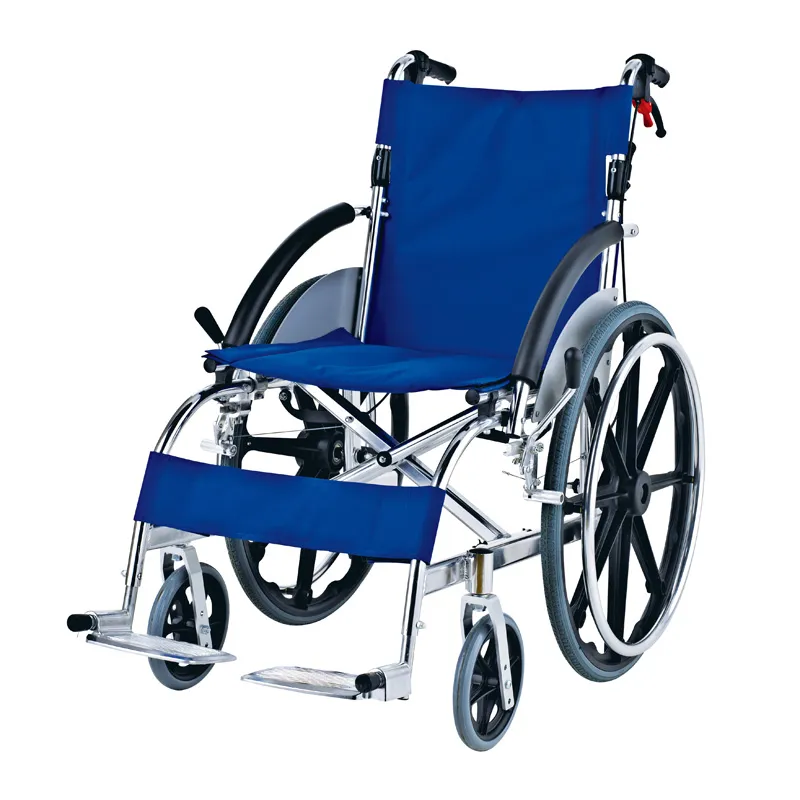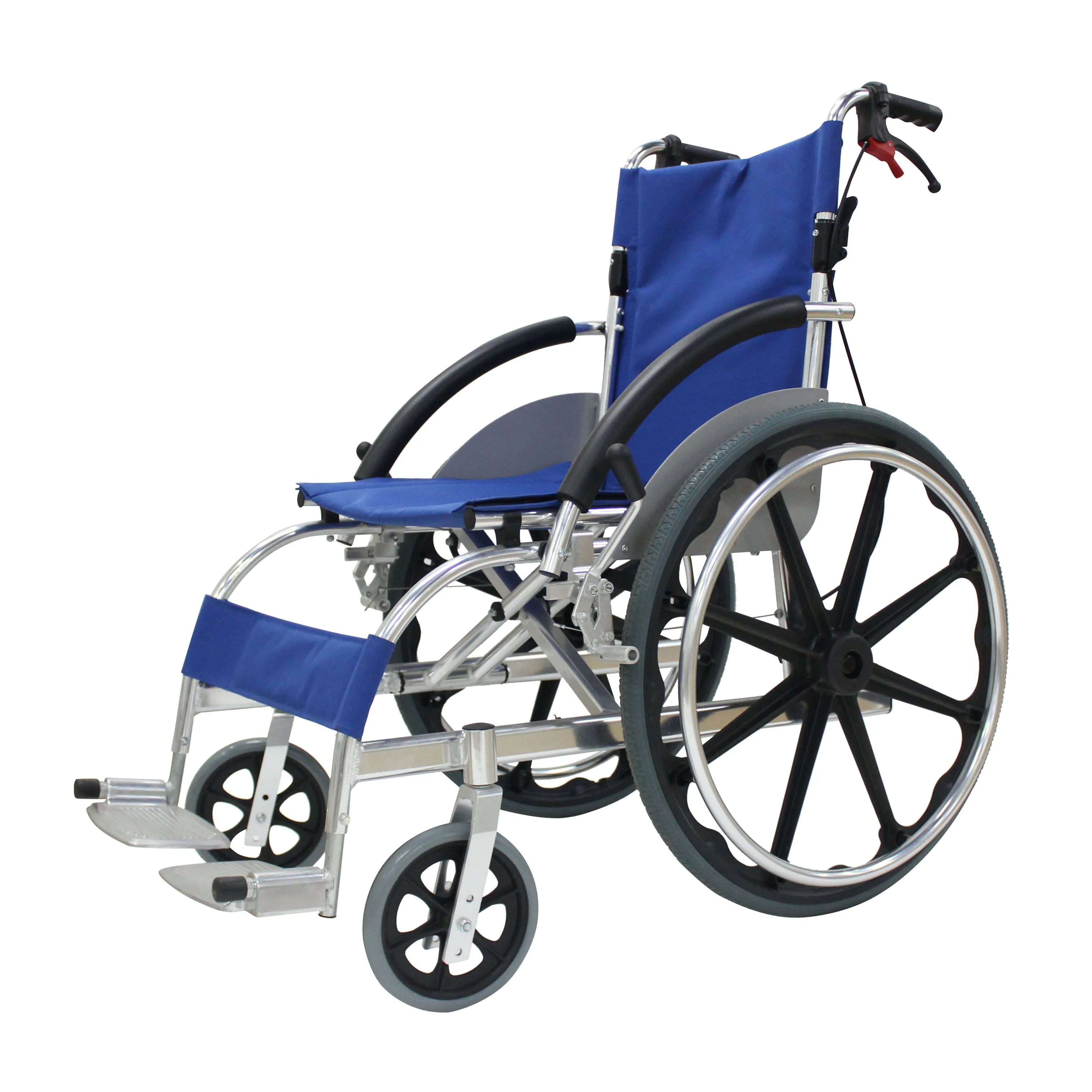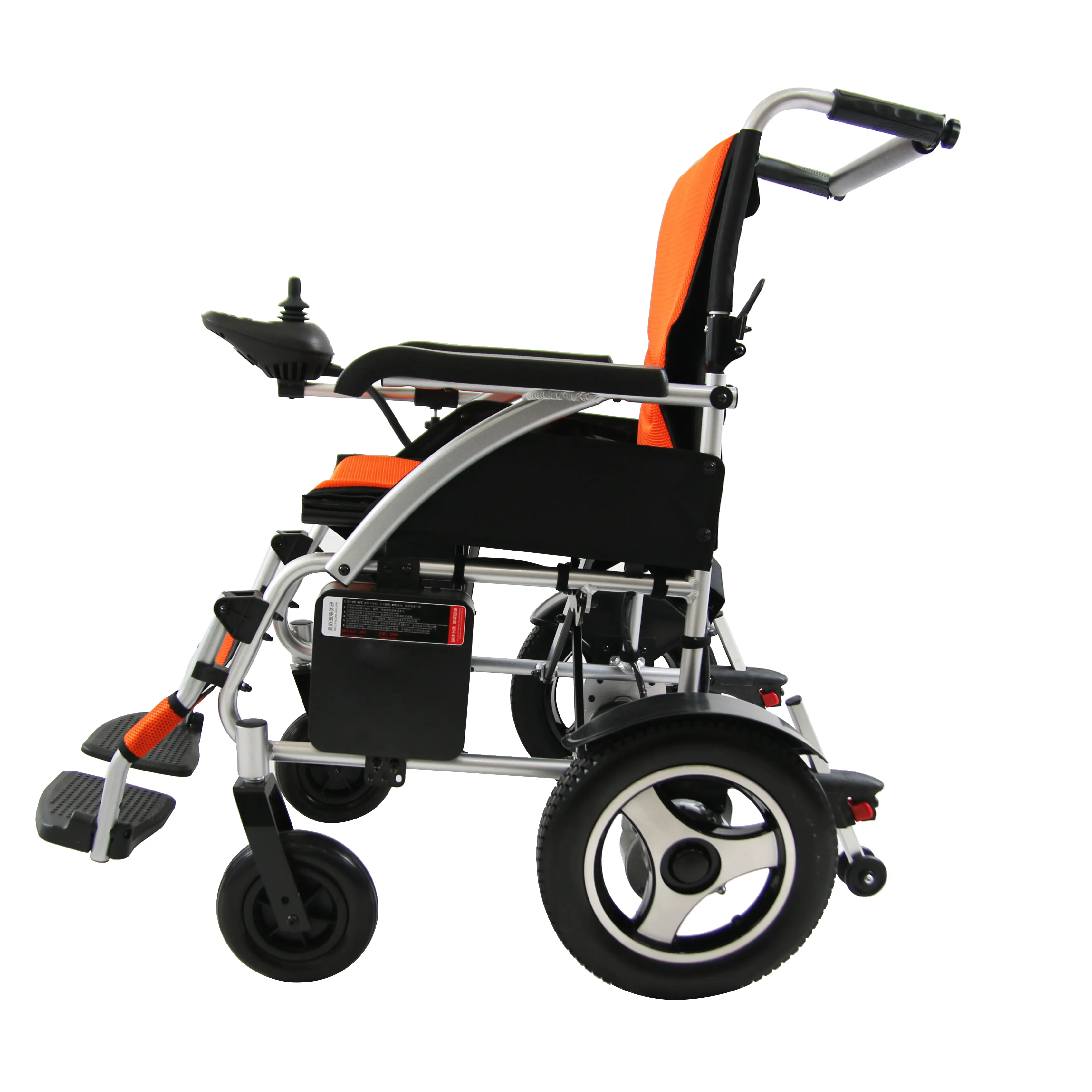As an important auxiliary tool for people with limited mobility, wheelchairs have been widely used in medical rehabilitation, elderly care and daily family life. Especially in the context of an aging society, the demand for wheelchairs is growing, and product types are constantly being subdivided. Common wheelchairs can be roughly divided into two categories: self push wheelchair and power wheelchair. There are significant differences between the two in terms of structure, function, usage, applicable population, price and even the degree of matching in the social service system.
So, which is better, self push wheelchair or power wheel wheelchair? There is no unified answer to this question. The key lies in the user's physical condition, living environment, economic ability and care conditions. This report will conduct an in-depth analysis of the two types of products, "self push wheelchair" and "power wheel wheelchair", to help different groups of people find a more suitable choice.

What is a self push wheelchair?
Self push wheelchair: human-powered, simple structure
The self push wheelchair is also called a "manual wheelchair", which mainly relies on the user or caregiver to push the large wheel forward. This type of wheelchair has a relatively simple structure, usually consisting of a metal frame, rubber tires, seat back support, armrests and footrests. Most self-push wheelchairs have large rear wheels and rims, which can be manually driven by the user, and some are foldable for easy carrying and storage.
What is a power wheelchair?
Power wheelchair: motor-driven, easy to control
A power wheelchair is a self-push wheelchair with motors, batteries, controllers (joysticks) and other components added to it. It can automatically move forward, backward, turn, and even climb slopes and adjust the seat angle through the control system. Most power wheel wheelchairs support remote control or smart navigation functions, and some models can be linked with mobile phone Bluetooth or voice control.
In summary, the self-push wheelchair emphasizes "active control", while the power wheel wheelchair pursues "easy travel".

Which is better, the self-push wheelchair or the power wheelchair?
1. Elderly people (>75 years old): power wheelchair is more practical
Elderly people, especially those who are disabled or semi-disabled, often have limb muscle degeneration and insufficient arm strength, making it difficult for them to push the self-push wheelchair. For this group of people, the power wheel wheelchair is obviously more feasible. Most of them rely on others for care. If they use a self-push wheelchair, they must be equipped with a dedicated person to push it around the clock, which is a heavy burden and inefficient. The power wheel wheelchair can greatly improve their autonomy and realize basic life activities such as "walking from the bedroom to the balcony" and "walking from the community to the pharmacy".
In addition, the intelligent design of the power wheel wheelchair, such as voice navigation, memory route, and ramp deceleration function, is particularly friendly to elderly users and further improves safety.
2. Young and middle-aged disabled people: self-push wheelchair is more conducive to rehabilitation and exercise
For young and middle-aged people with lower limb paralysis but good upper limb strength, such as spinal cord injury patients and postoperative rehabilitation patients, the self-push wheelchair is more suitable for their pace of life and rehabilitation plan. The self-push wheelchair is not only a means of transportation, but also an exercise device. Pushing a wheelchair can exercise arm muscles, improve endurance, and avoid secondary health problems caused by long-term sitting, such as muscle atrophy and lung infection.
In addition, this group of people have strong self-care ability, can skillfully use the self-push wheelchair to go up and down hills and over bumps, and are more flexible in narrow spaces (such as subway stations and elevators).
3. Temporary injured or postoperative recovery: self-push wheelchair is cost-effective
For users with short-term mobility difficulties due to falls, fractures, surgery, etc., the self-push wheelchair has obvious economic advantages. Usually these people only need to use wheelchairs for a few weeks to a few months, and buying expensive power wheel wheelchairs is not cost-effective.
The self-push wheelchair is easy to rent, with low daily rent and flexible use. Family members can also temporarily help push it to meet basic travel needs. Especially for hospitalized patients, the self-push wheelchair is a standard configuration in the rehabilitation department and orthopedic ward of the hospital.
4. Paralyzed patients with long-term care needs: power wheelchair reduces care pressure
For patients with severe disabilities who have completely lost the functions of their lower and upper limbs, such as ALS, cerebral palsy, hemiplegia, etc., traditional self-push wheelchairs are difficult to meet their living needs. It is extremely burdensome for caregivers to push wheelchairs, and it is not suitable for long-term use.
Power wheel wheelchairs, especially those with remote control functions and electric lifting/turning functions, can help caregivers reduce labor intensity while giving patients greater freedom of movement. Smart power wheel wheelchairs even support head control and eye control, and some high-end products have medical-grade positioning systems to ensure the safety of users when going out.
Self push wheelchair and power wheelchair: Each has its own advantages
Comparison dimensions | Self push wheelchair | Power wheel wheelchair |
| 1. Driving mode | Manpower push | Motor control |
| 2. Operation difficulty | Strong upper limb strength required | Easy to operate, button control |
| 3. Portability | Foldable, lightweight, easy to carry | Heavy weight, need to remove the battery, inconvenient to carry |
4. Usage scenarios | Hospitals, short-distance movement, rehabilitation training | Long-distance travel, daily life, indoor and outdoor use |
| 5. Battery life and speed | No endurance limit, speed depends on physical strength | Range 10-30 kilometers, speed 5-8km/h |
| 6. Cost and maintenance | Low price (US$300-2000), almost maintenance-free | High price (2000~10000 USD), battery needs to be replaced, motor needs maintenance |
| 7. Safety | Simple structure, low risk | Circuit and battery risks, need regular inspection |

Self push wheelchair and power wheelchair: cost considerations
The price of self push wheelchairs is usually between a few hundred dollars and two thousand dollars, which is suitable for short-term use and people with limited budgets. Most families can afford its purchase or rental costs.
The price of power wheel wheelchairs is wide, ranging from $2,000 for basic models to more than $10,000 for high-end smart models. In addition, the battery life is limited (usually 1.5-2 years), and each replacement costs an additional $500-800. In addition, motor damage, remote control failure, etc. also require professional repairs.
For families with average economic affordability, choosing a power wheel wheelchair requires weighing long-term use plans.
Self push wheelchair and power wheelchair: environmental adaptability
1. Self push wheelchair
Suitable for stable environments in cities such as flat ground, corridors, elevators, and buses. Due to its simple structure and not easy to damage, users can also adjust it by themselves if there is a problem, such as changing tires and adjusting brakes. Almost all medical equipment stores and hospitals can provide maintenance services.
2. Power wheel wheelchair
It has higher environmental requirements, such as waterproof, dustproof, and shockproof functions to cope with uneven outdoor roads. In addition, special care should be taken in rainy days, wetlands, and other environments to prevent motor short circuits. Maintenance is relatively complicated and requires reliance on professional manufacturers or after-sales systems, with long maintenance cycles and high costs.
From the perspective of policy and social support
In China, many governments provide wheelchair purchase subsidies for people with disabilities, and some areas have included them in the medical insurance or minimum living security system.
For example:
1. Beijing: Provide a one-time power wheelchair purchase subsidy for people with first and second degree physical disabilities;
2. Shanghai: People with minimum living security can enjoy 50%-100% funding for self push wheelchairs or power wheelchairs;
3. Guangdong Province: Some pilot cities have launched power wheelchair sharing services to improve barrier-free travel.
In addition, public welfare organizations such as the China Disabled Persons' Federation and the Red Cross often support people in need by distributing wheelchairs at designated locations.

There is no absolute "better", only "more suitable"
Which is better, a self push wheelchair or a power wheelchair? From the perspective of structure, function, applicable population, usage scenarios, cost and policy support, there is no product that is suitable for everyone.
1. For young and middle-aged users who pursue exercise and have strong self-care ability: self push wheelchair is a better rehabilitation aid;
2. For the elderly who are old, weak or need care from others: power wheel wheelchair can significantly improve the quality of life;
3. For short-term users: renting a self push wheelchair is the most cost-effective;
4. For severely paralyzed people and their families: power wheel wheelchair is a necessary tool for life.
Only by rationally evaluating your own physical condition, frequency of use, economic affordability and environmental conditions can you make a more scientific choice of wheelchair. After all, a wheelchair is not a simple means of transportation, but an important part of the quality of life.
What is your background and production capacity?
Founded in 2009, our company – Dayang Medical – is a professional hospital equipment provider with two comprehensive R&D and manufacturing facilities based in Foshan (Changhongling Industrial Park, Nanhai). Our factory integrates research, production, quality inspection, sales, and shipping under one roof.
As a certified ISO13485 compliant facility with FDA, TUV, and CE certifications, we manufacture and sell products such as wheelchairs, hospital beds, commodes, shower chairs, and more at low price and competitive quotes.










